Sundance Film Festival: New Frontier
Producer & UX Writer
2022
Turning one of the world’s most exclusive film festival’s, into a globally accessible Web/VR experience.
Concept
Produced Sundance Film Festival's immersive XR experience, New Frontier, featuring a custom-built 3D venue that allowed attendees in avatar-form to explore new media works, attend film screenings, and engage with filmmakers & artists in real-time.
Goals
Key liaison between Sundance and agency, ensuring alignment and delivery on core strategy objectives, while simultaneously leading every aspect of discovery, UI/UX design, web development, QA, and go-live.
Recognitions
Objective
A Web-Based Film Fesitval
Due to the COVID pandemic, Sundance needed to quickly pivot their in-person festival to being entirely virtual. Given the novel and isolating experience of lockdown and wanting to find a unique way to connect attendees, Sundance tasked us with developing an immersive 3D space-themed digital venue that would bring users together by way of their digital devices (laptop or VR headset).
In order to recreate the IRL festival it demanded a seamless real-time web experience with the necessary spatial environments to house their live film screenings, cocktail hours, and new media art gallery. And what's a festival without a notable social atmosphere? So we made the event avatar-driven, so that attendees had the autonomy to move around the experience and engage in realistic chat conversations with others.
Experiments
Discovery
We began our initial ideation around how we could take a Zoom-like experience, and make it creative and engaging. We soon moved away from that idea, feeling that a video conference interface was pretty commonplace among virtual events, and we wanted to expand our visual direction. This lead to the final proposal that the venue would orbit in space, like a biosphere, which lead to designs and comps of a galactic hub with offshoot environments for attendees to explore (like live content, social rooms, and a cinema).
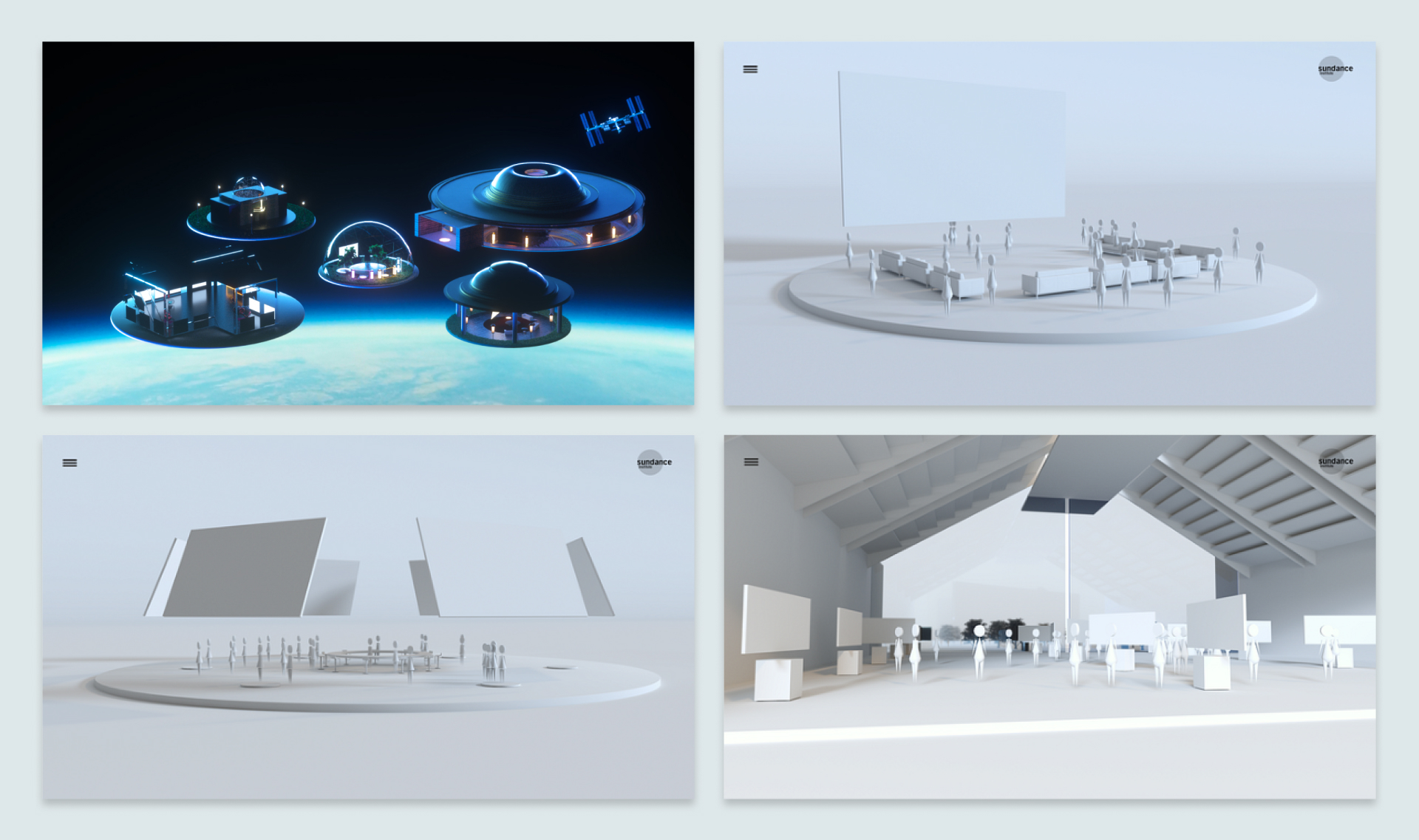
Design Process
User Flow
After our discovery phase, agreeing on the visual direction and user needs that would dictate each environment of the experience (more on these later) we moved forward with establishing the user flow and site map for both web and VR users. Below is our final user flow for web users (the VR flow was very similar):
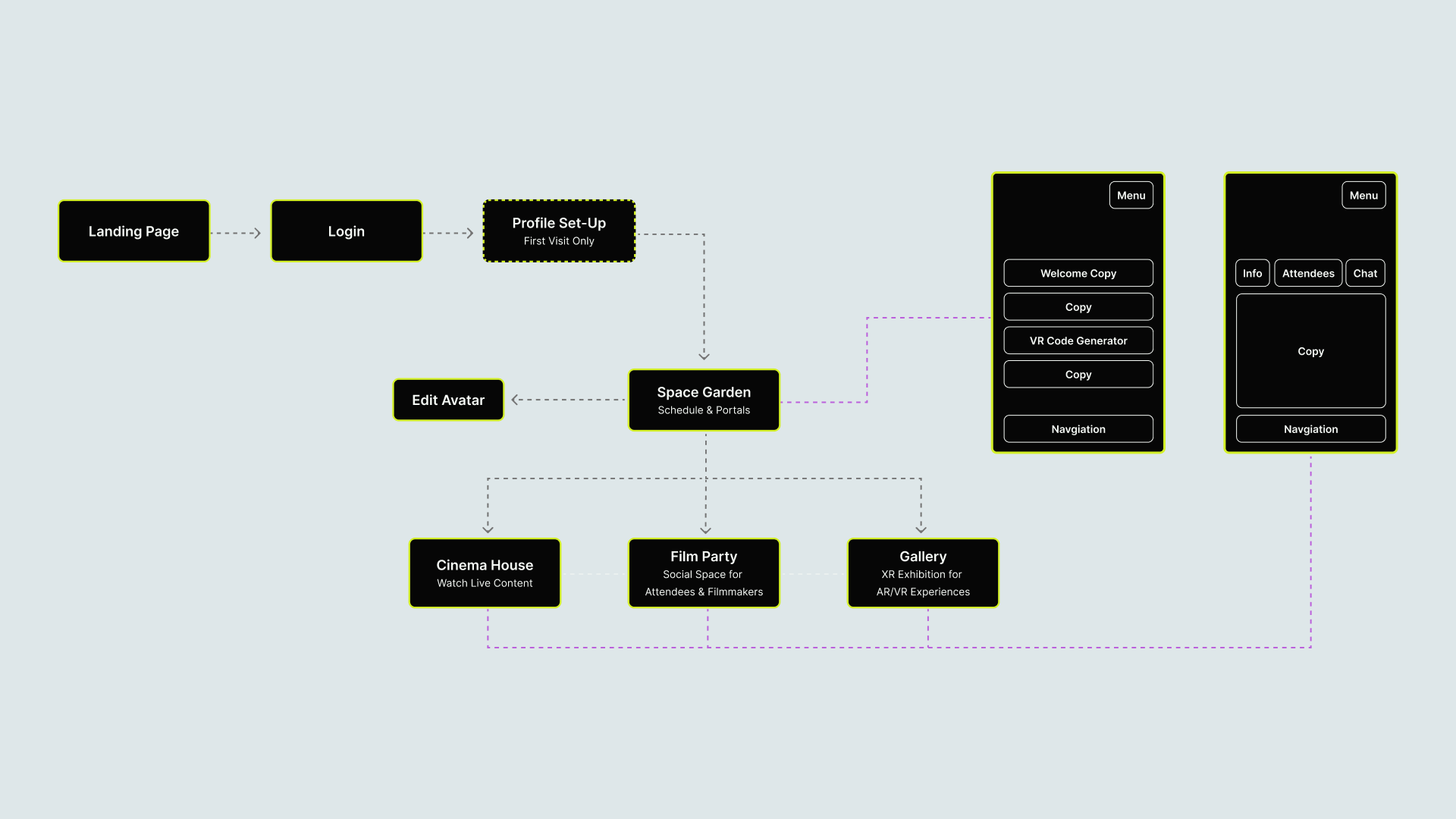
Design Process
UI & Navigation
We used a side-panel UI for functional navigation. This made it easy for users to navigate the experience while maintaining a significant canvas for interactive 3D content.
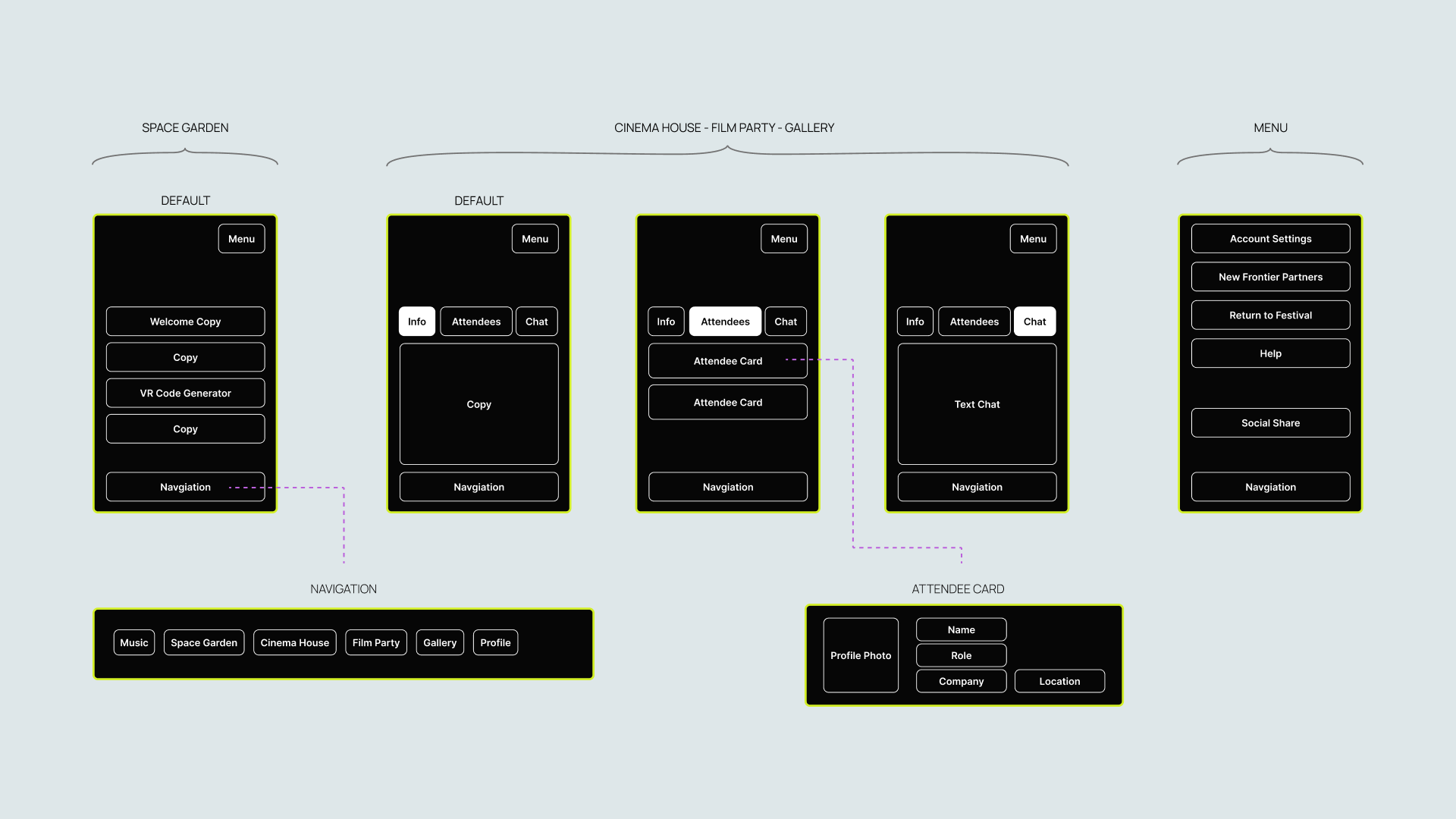
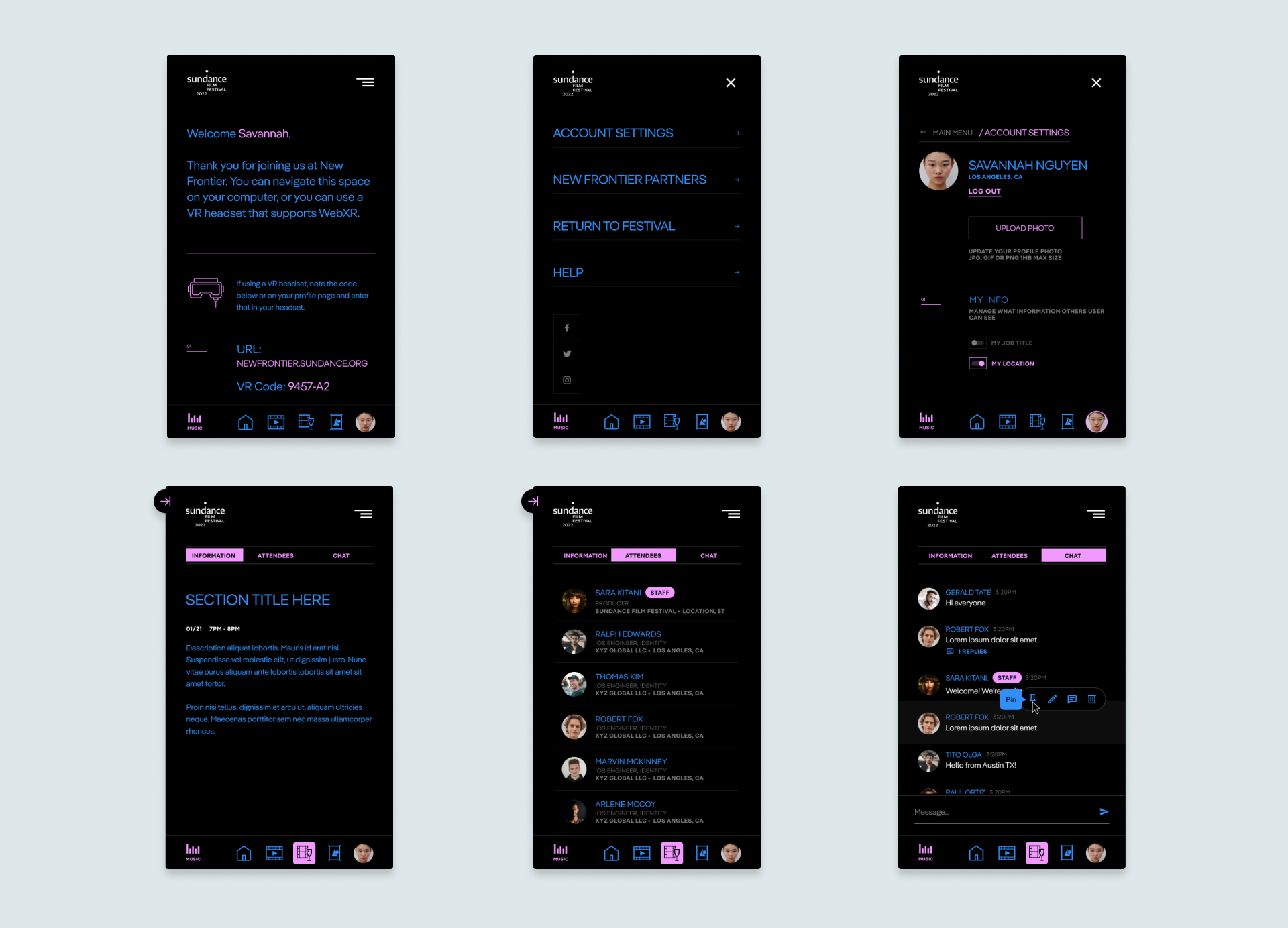
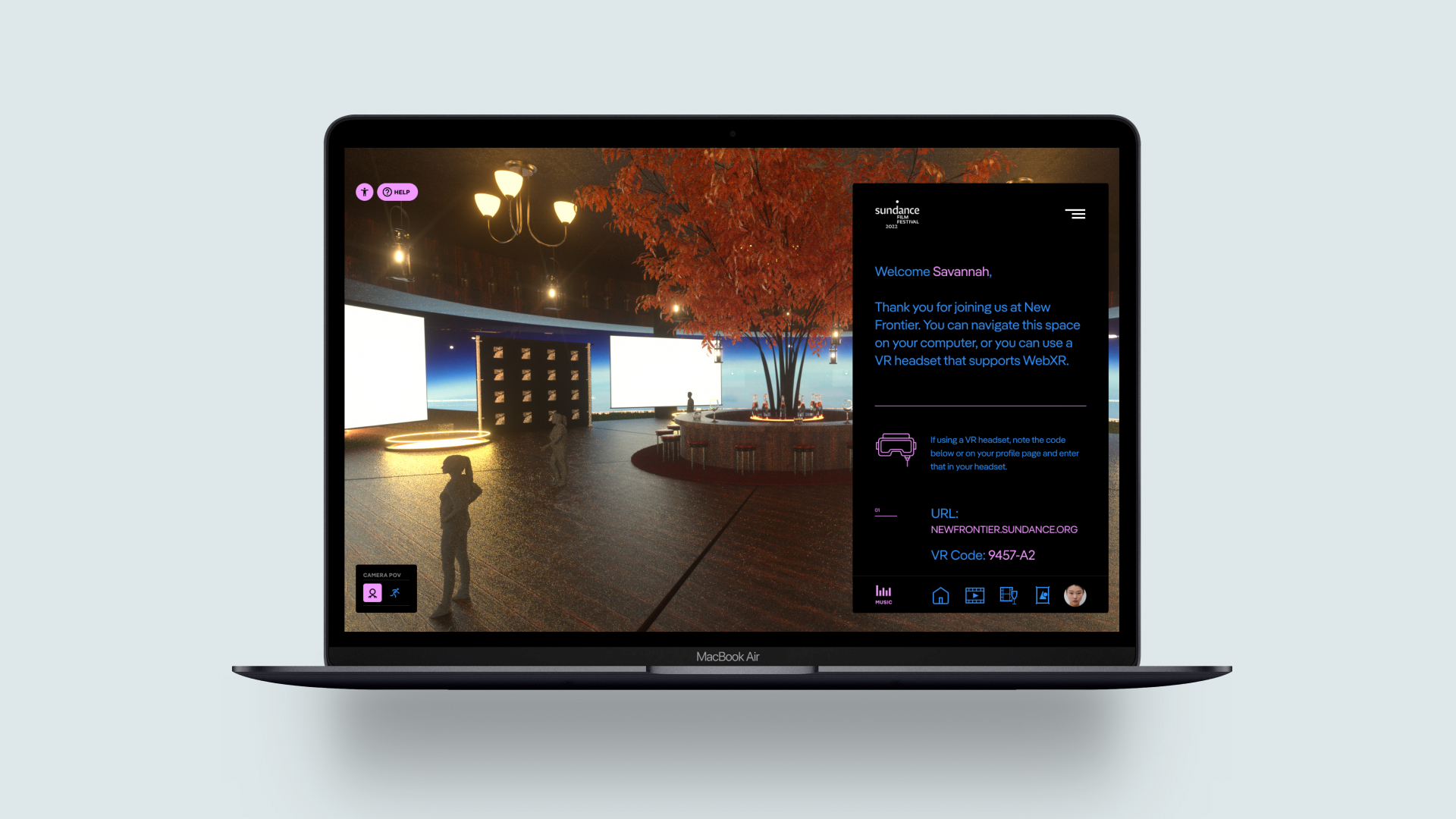
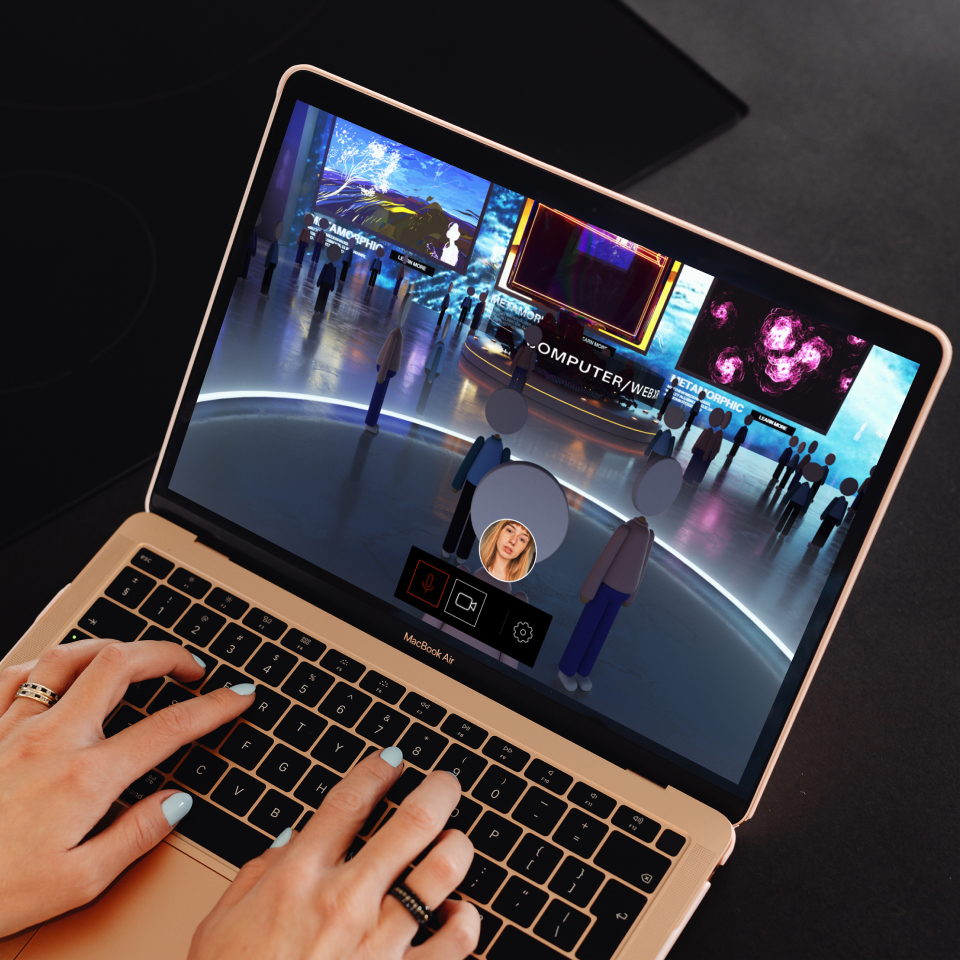
Interactivity
Proximity-Based Chat
Because of the ubiquity of video conferencing during the pandemic, we incorporated video chat to further personalize conversations. To chat with others, users could navigate their avatar next to another attendee, either by walking on web or teleporting on VR, and accept a prompt to start a chat. This created a small bubble around the participating users to launch an audio or video chat. We mapped each user’s video on their corresponding avatar head, so users could experience as real a human connection as possible within the virtual experience.
Final Build
Components
01 Landing
02 Profile Set-Up
03 Space Garden
04 Film Party
05 Cinema House
06 Gallery
01.
Landing
Users start zoomed at their geo-location - meeting users where they were - before the camera zoomed backed all the way into space to the satellite venue's orbitting perspective to sign-in to the event. This transition played a vital UX link, connecting the users’ real location with the experience and moreover, connecting life on Earth with all the creativity and innovative thinking comprising the New Frontier experience.
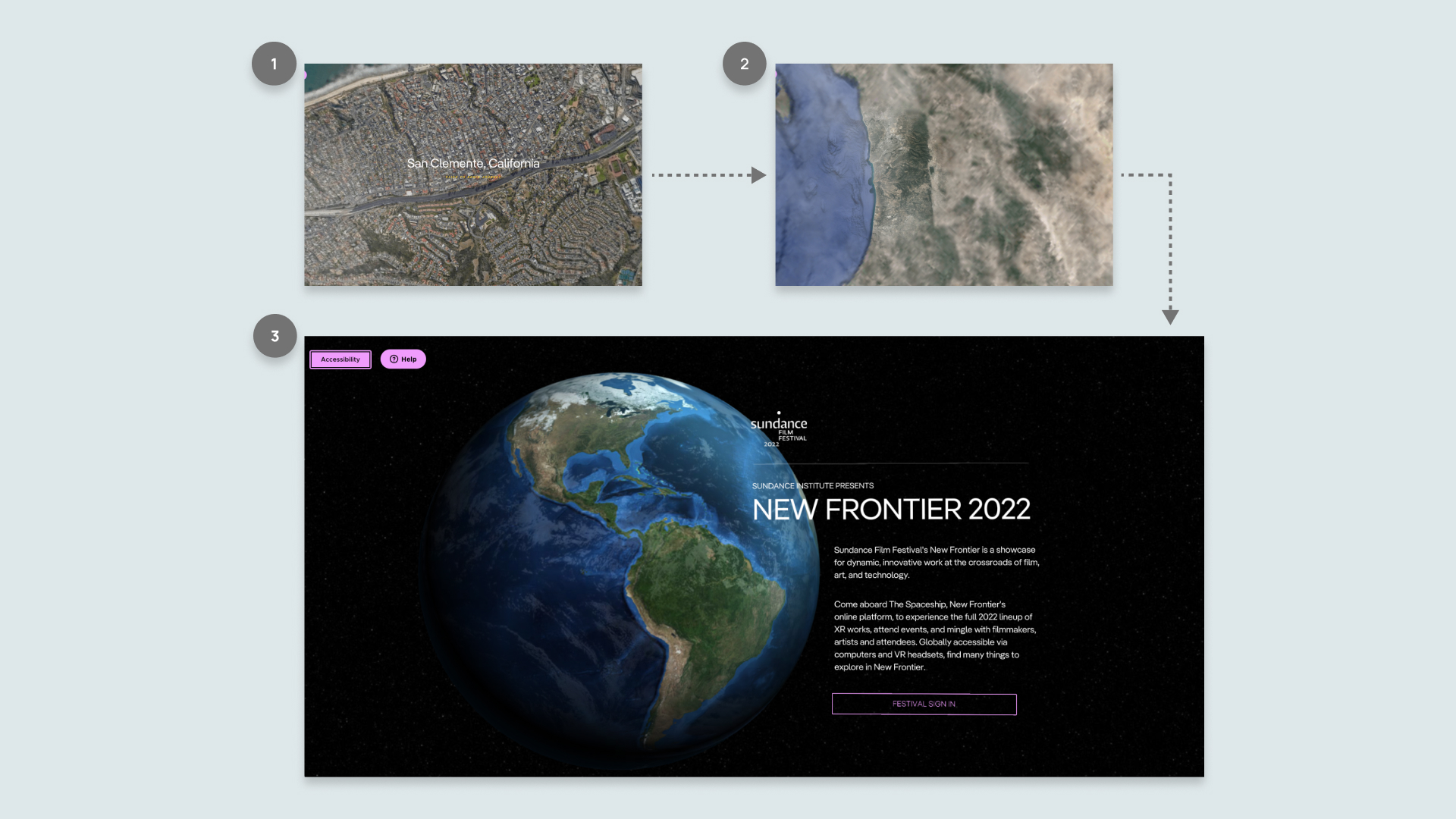
02.
Profile Set-Up
On a user’s first visit to the New Frontier site, after being launched to the space venue, they were taken to the following page to create their personal profile and customize their avatar by selecting from various combinations. The skins available to a users varied depending on their user type (General, Staff, or Talent).
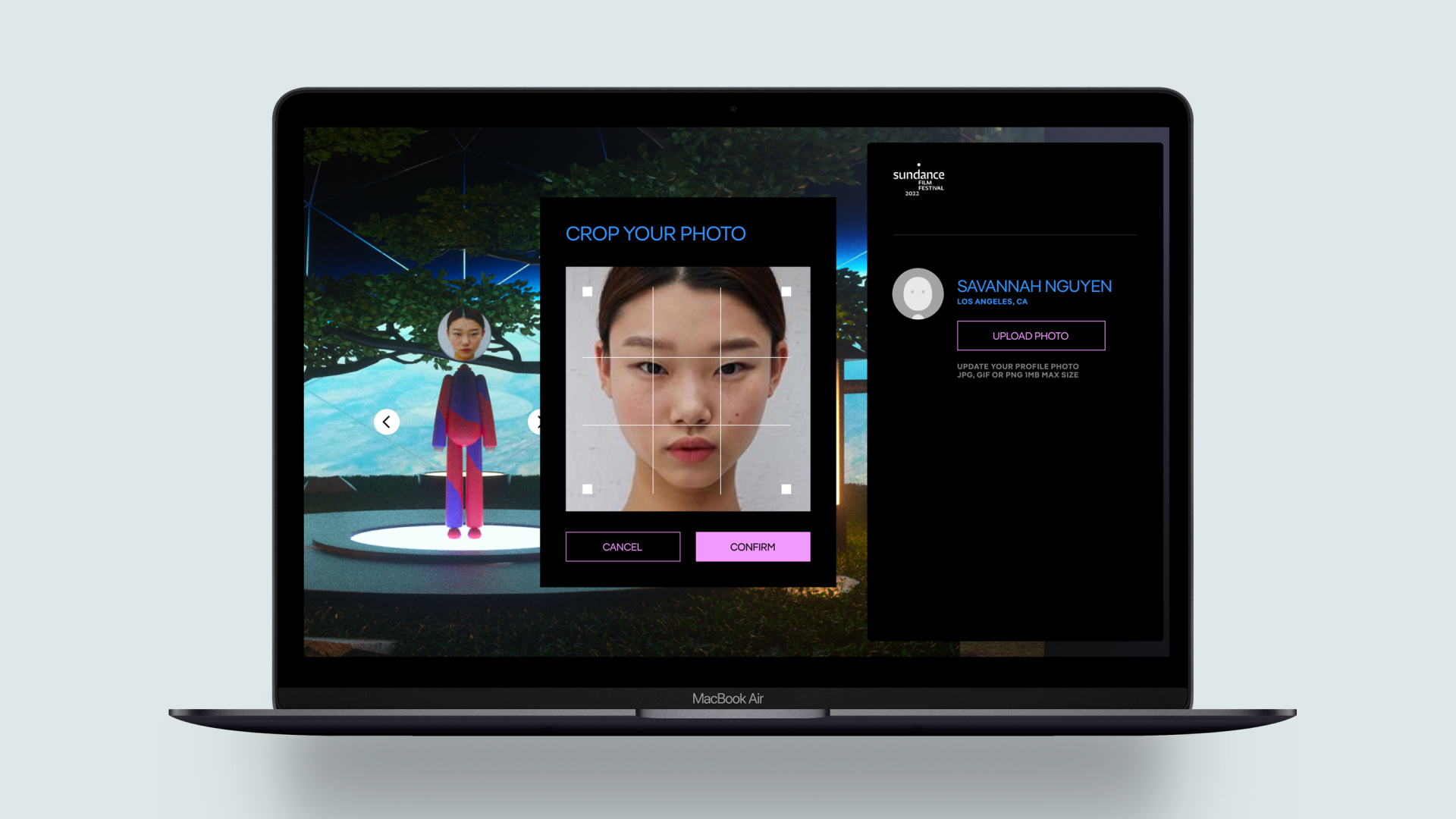
03.
Space Garden
This marked the entry point into the New Frontier experience. Because attendees would spawn here after creating their profile and avatar, we wanted to create a welcoming and easy-to-navigate environment, so we provided a series of tutorials on-screen to demonstrate how to engage with the platform which encouraged users to practice the mechanics of moving their avatars around the environment (whether they were on the web or in VR).
From this environment, users had access to all 3 multi-player environments (Film Party, Cinema House, Gallery) via "teleportation" portals. Besides each of these portals included a 2D screen featuring a schedule that updated in real-time for users to read content titles and start times, as well as their current time and date, so they had relevant information on each environments daily events.
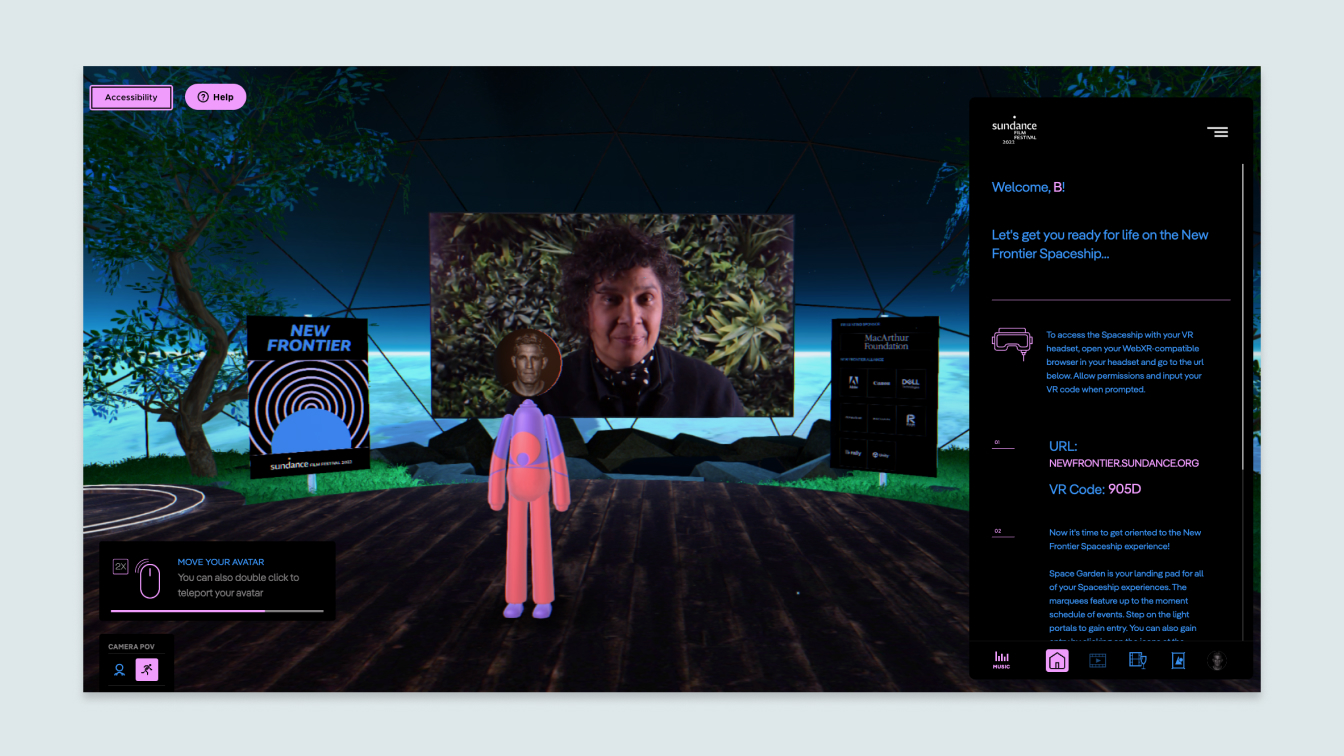
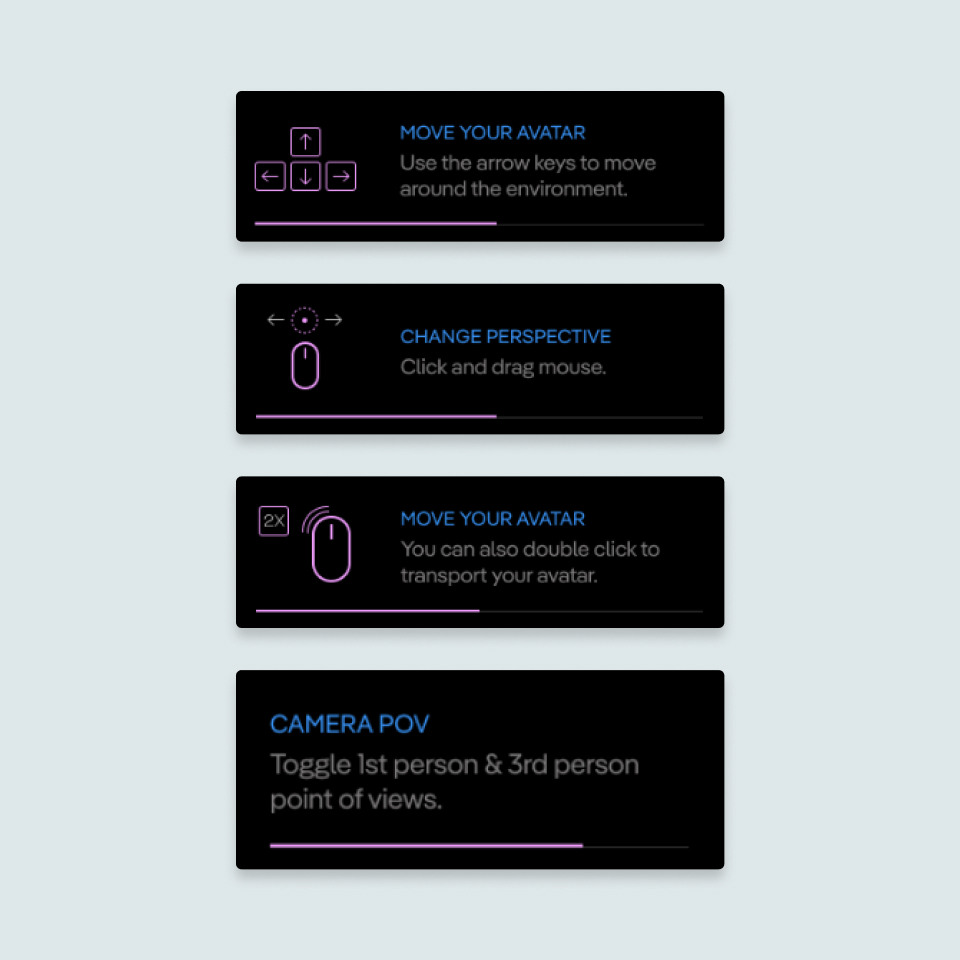
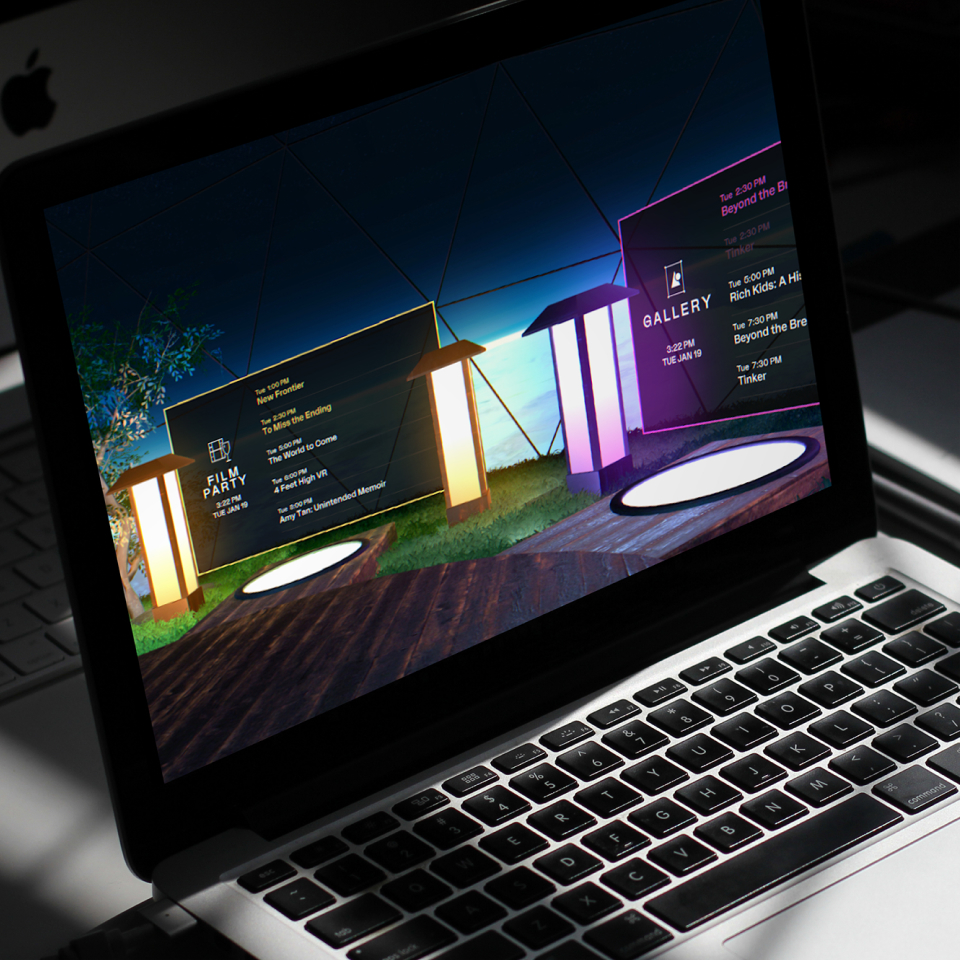
04.
Film Party
This was the social hub of the experience designed to bring the audience together. It featured a large communal space surrounded with smaller, more intimate breakout rooms for film screening panel discussions. Here users could explore the environment and enter proximity-based chat bubbles with other attendees and also access a running list of attendees present in the room in the RHS menu to network and connect.
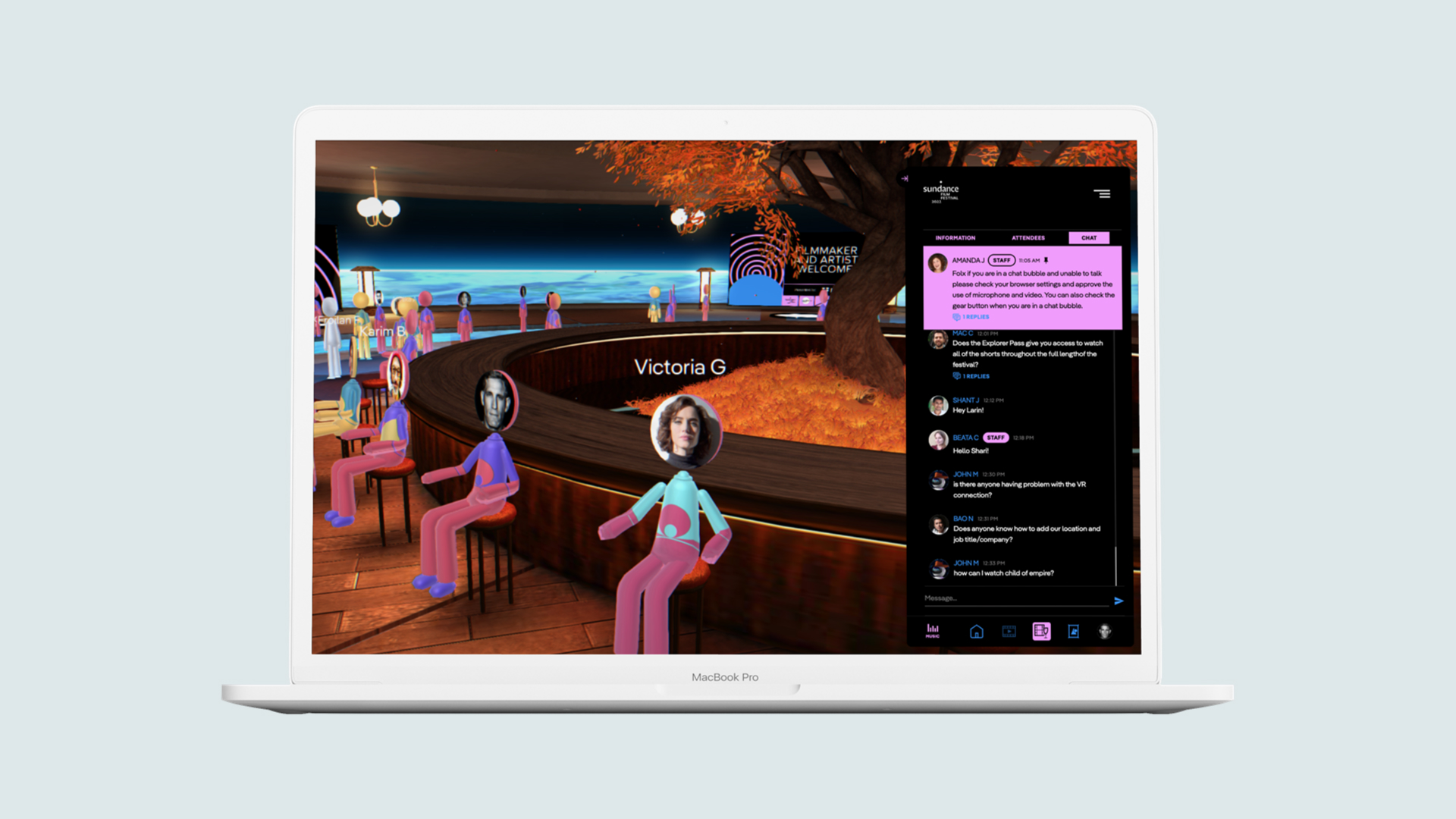
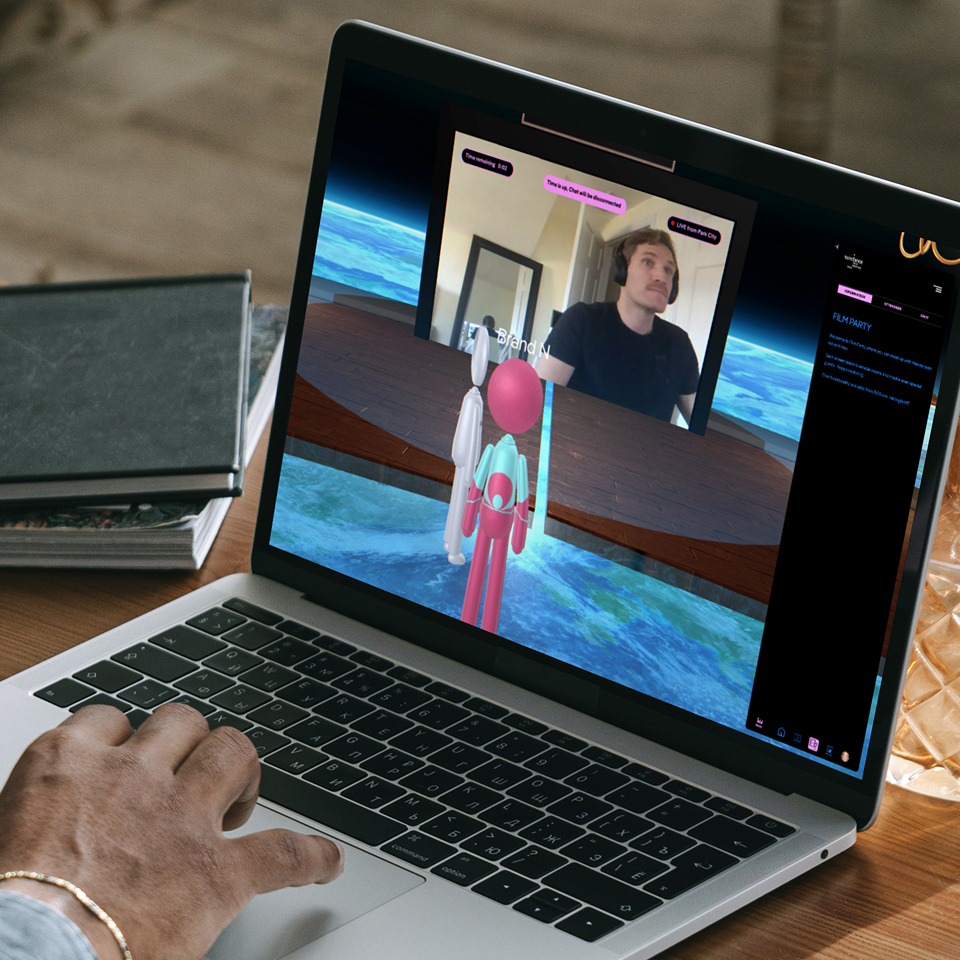
Biodigital Bridge
Unlike the first year, the 2022 festival was to coincide with the in-person event, so we wanted to find an inventive way to connect users in the virtual space to those on the ground in Park City. To intertwine both worlds, we built a two-way portal called “The Biodigital Bridge” in this environment that allowed Park City attendees to broadcast their audiovisual feed into the digital platform, as well as New Frontier avatars to broadcast their feed onto a physical LED screen installation, to engage in real-time conversations at human scale.
05.
Cinema House
This was a space for users to watch the festival's programming sessions in a theater environment. To accomodate the range of programming needs for Sundance, we enabled this environment to host 3 format types: video, livestream, web presentations. As sessions took place, attendees could wander around and socialize as they could in the Film Party. In RHS panel, users could access all the Cinema House session info, identify all attendees in the environment, and chat message with all attendees in the environment throughout the session.
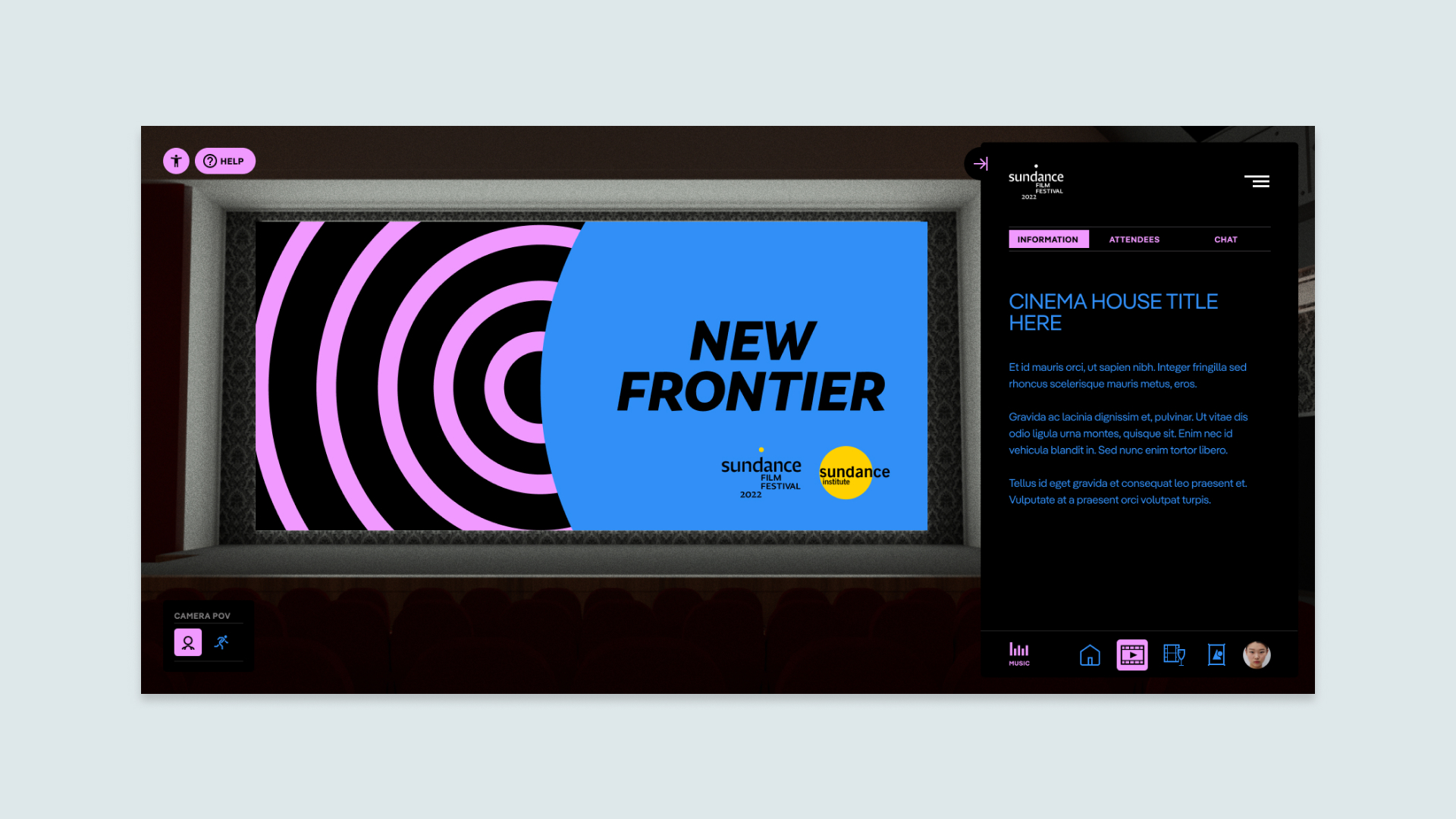
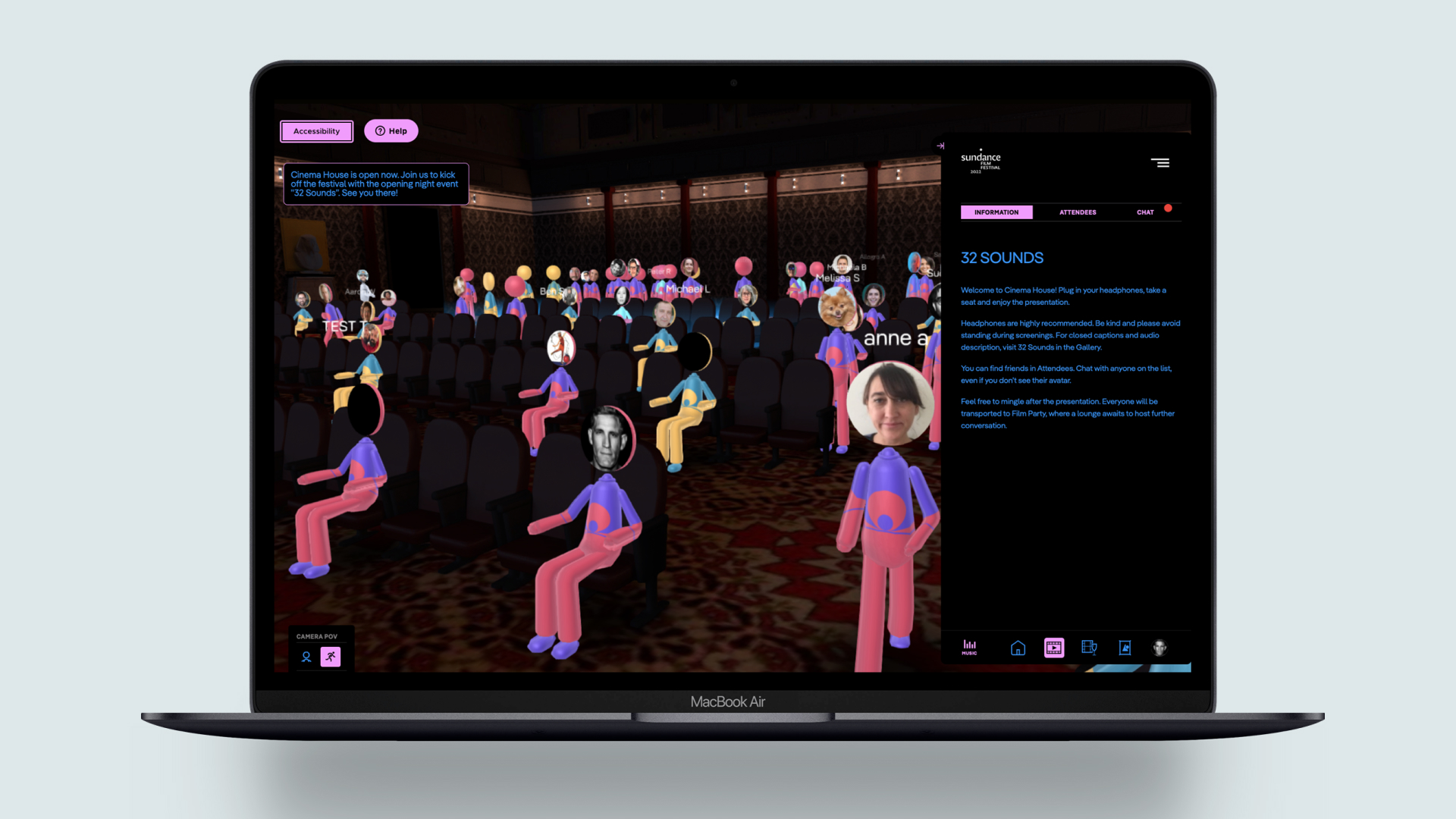
06.
Gallery
The Gallery was another social space that displayed the full slate of New Frontier new media experiences within a single room for users to explore. Attendees could walk around to view the projects, each representing as a standalone showcase.
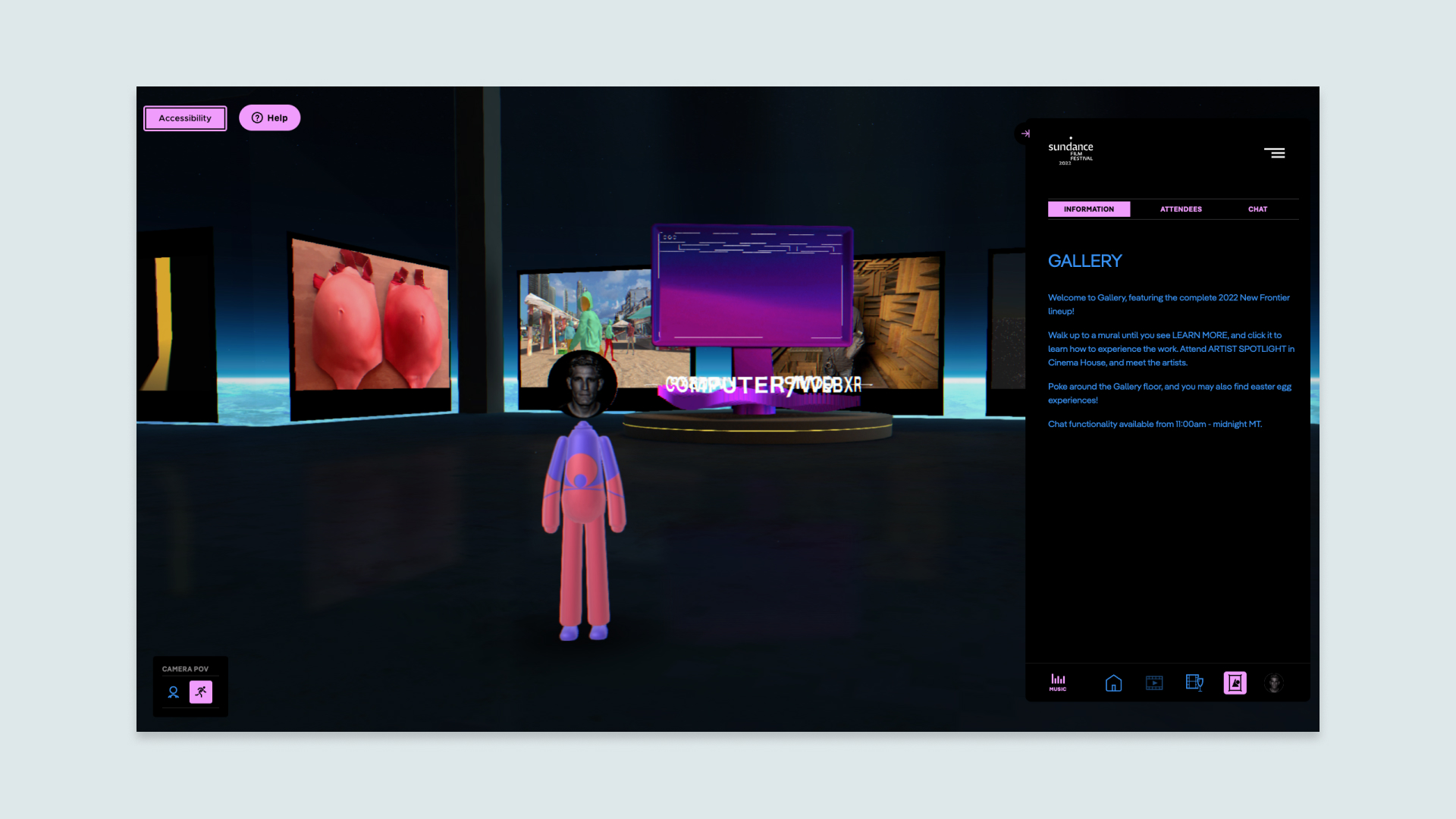
Exhibition Murals
As users approached a project, a user could select "Learn More" to be taken to a full-screen page for that work, which included:
- Title
- Runtime
- Description
- Credits
- System Requirements (i.e Device, Instructions, etc.)
- Launch Experience (via link to external URL)
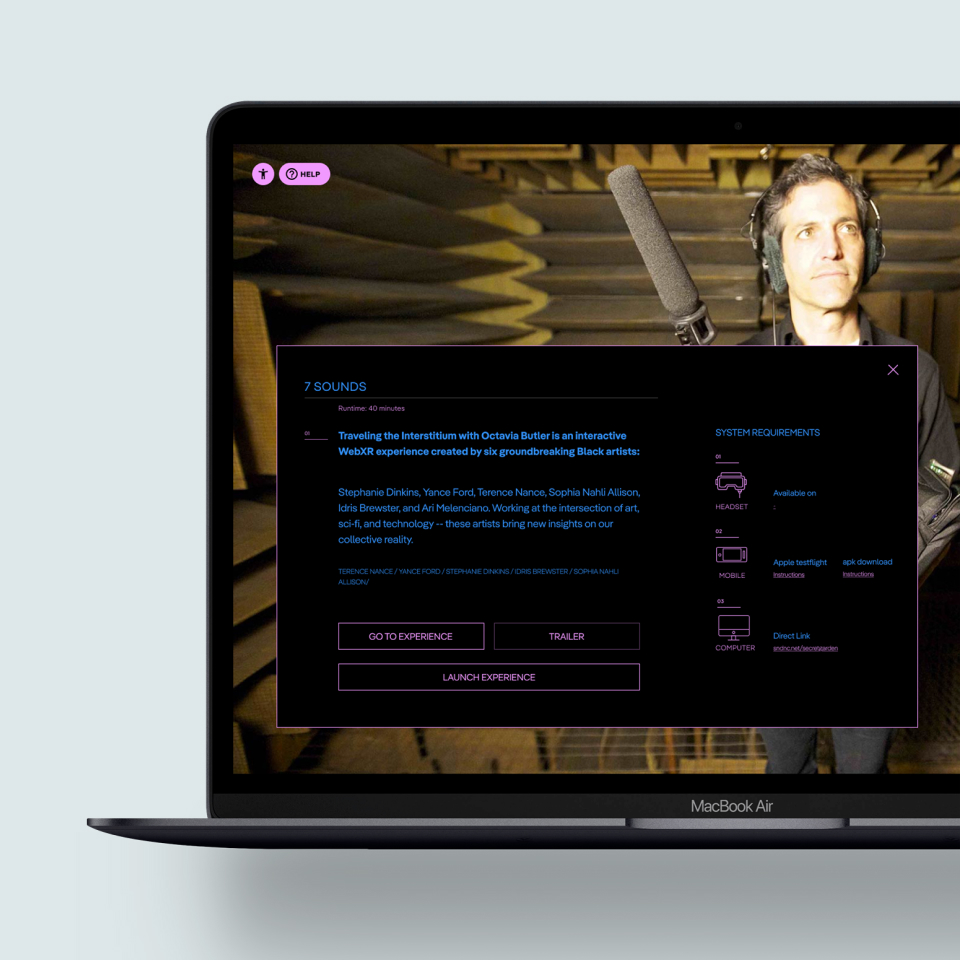
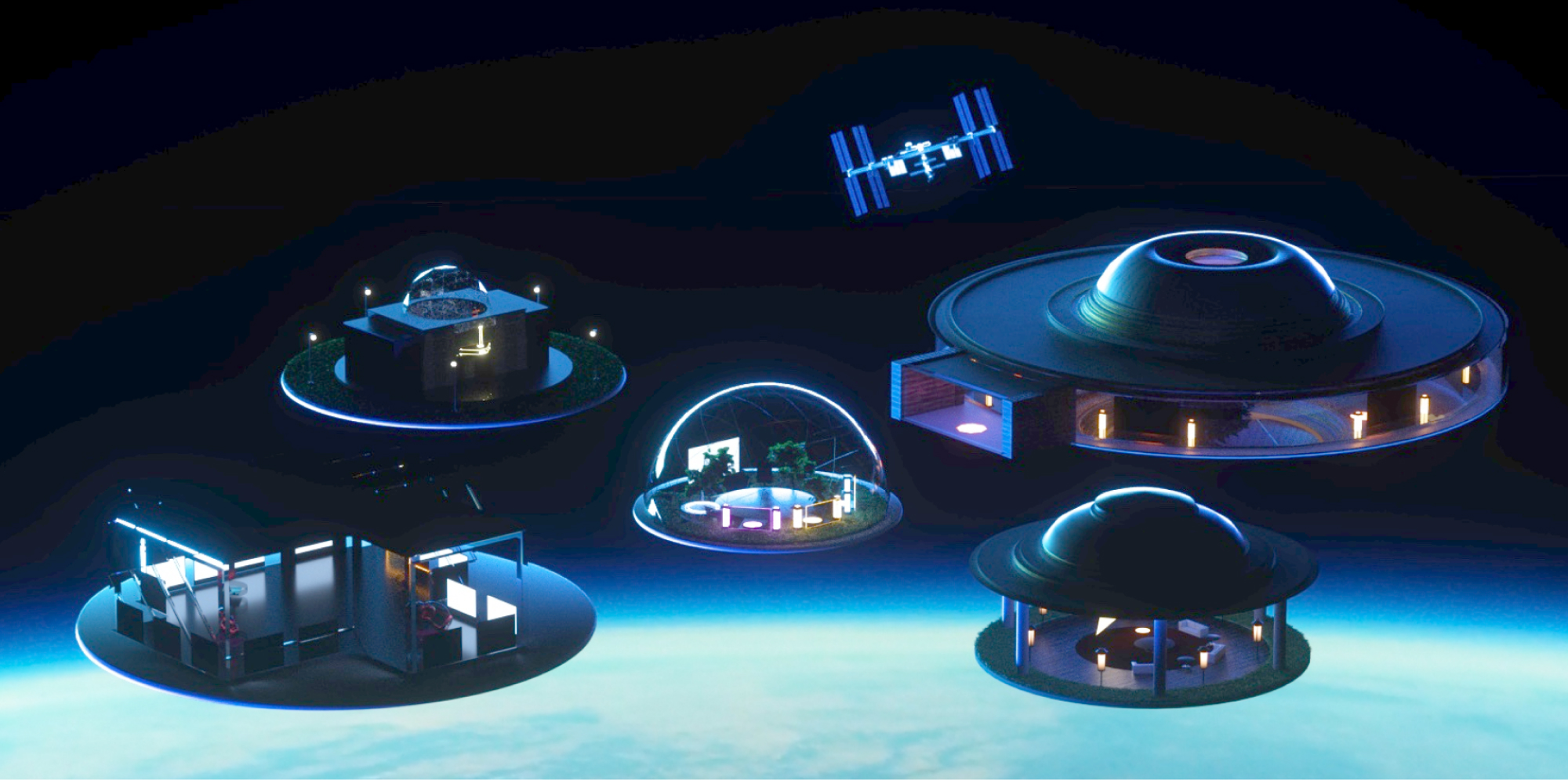
 Work
Work